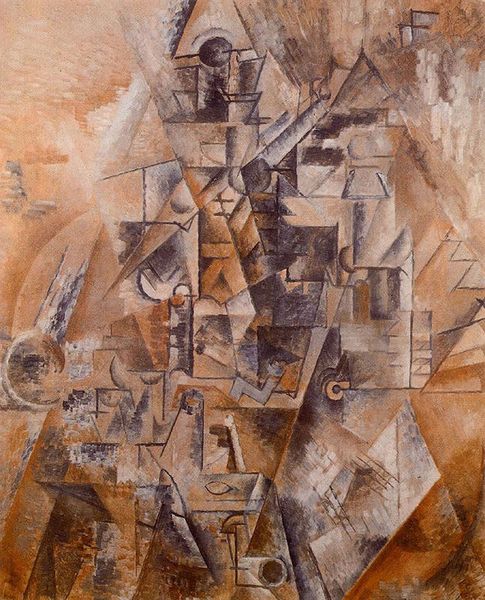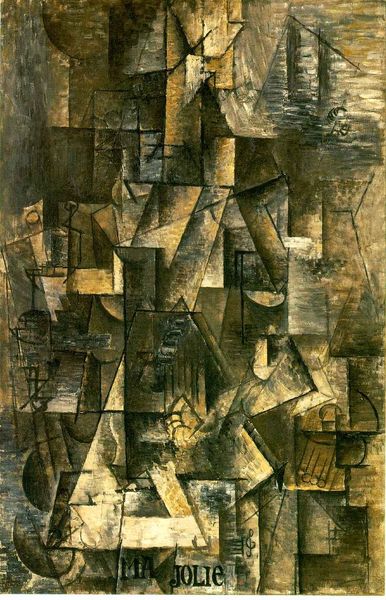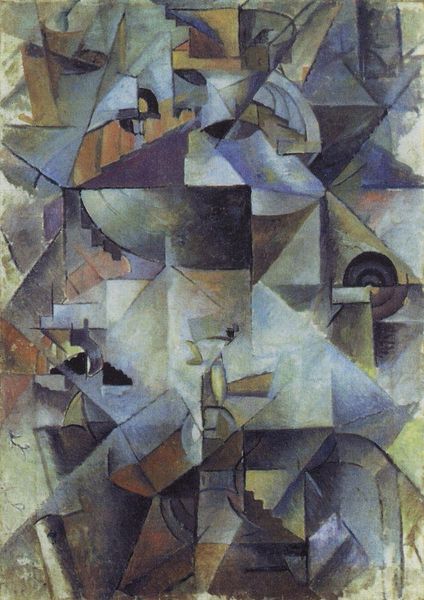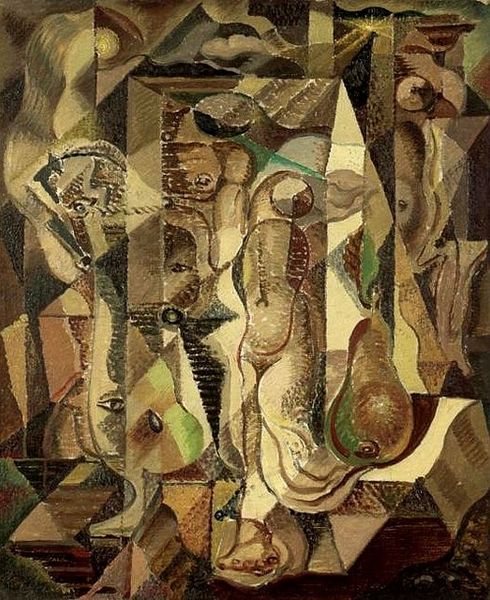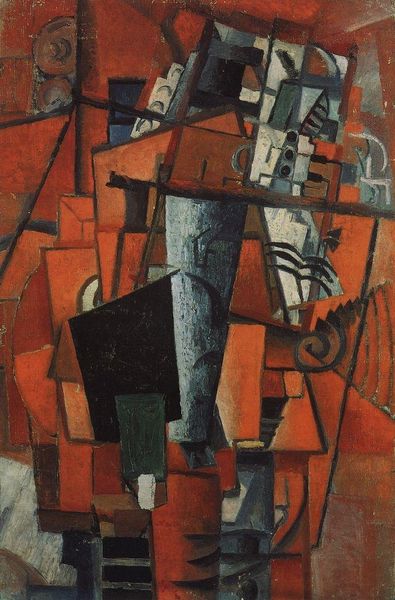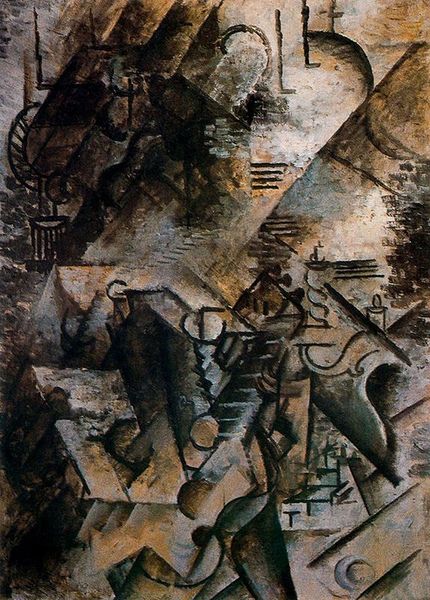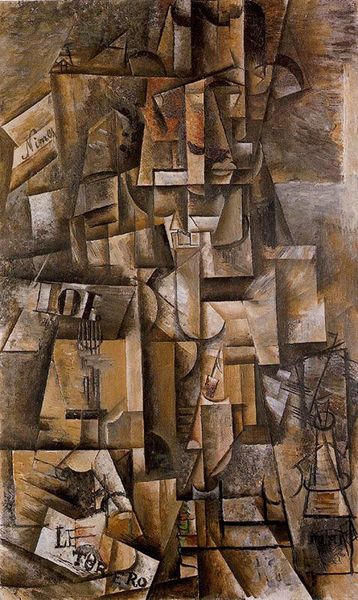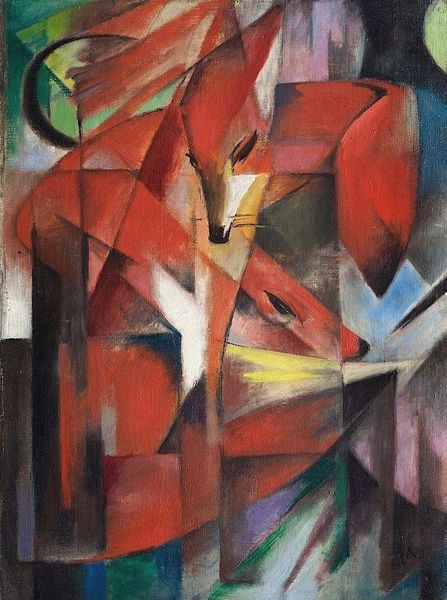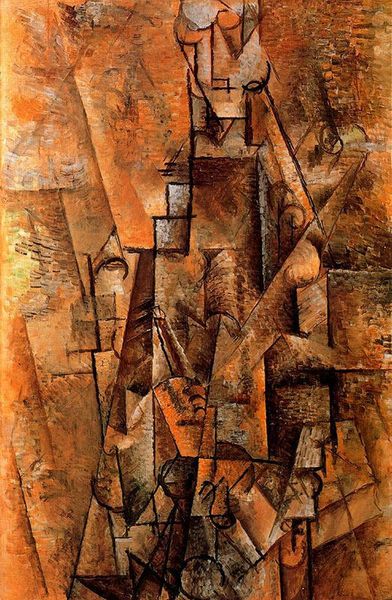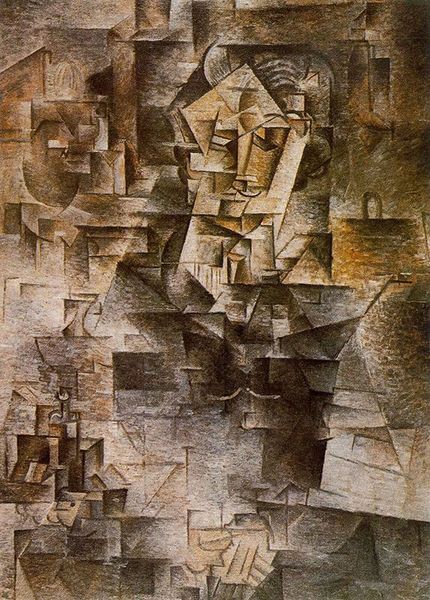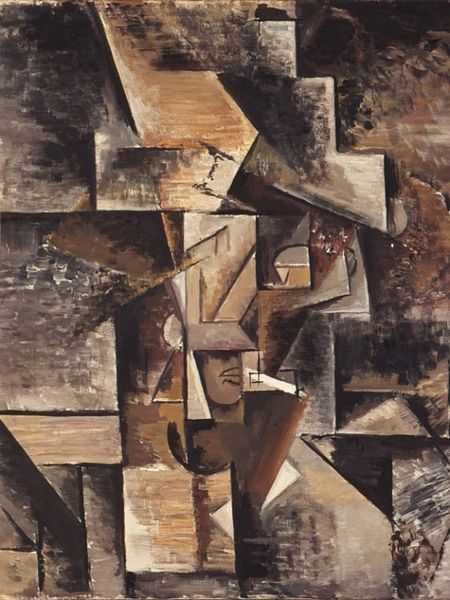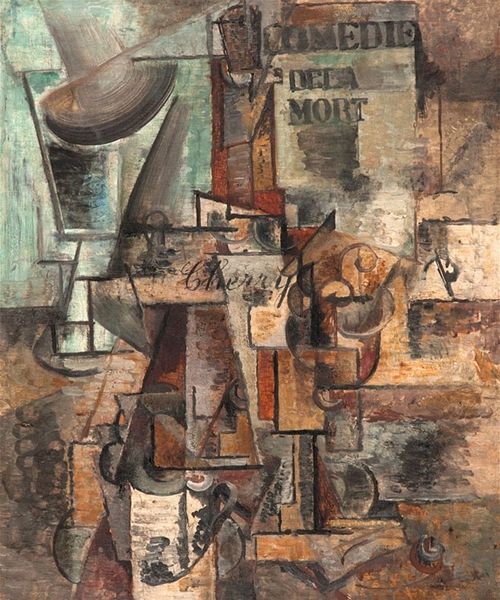
painting
#
cubism
#
abstract painting
#
painting
#
textured
#
possibly oil pastel
#
geometric
#
abstraction
#
cityscape
#
expressionist
#
futurism
Copyright: Public domain
Editor: This is Kazimir Malevich’s "Samovar" painted in 1913. It looks like he's exploring cubist ideas through these stacked geometric forms rendered in, possibly, oil pastel. It feels weighty and mechanical. What do you see in this piece, looking at it formally? Curator: The strength of this composition lies precisely in that sense of weighty geometry you’ve identified. Note how Malevich eschews traditional perspective; space is instead articulated through the interlocking of shapes. There's a fascinating interplay between line and form here. Editor: Yes, I see what you mean. The texture seems crucial, giving a tactile quality to the geometric precision. Are there any shapes in particular that stand out to you? Curator: Certainly. Observe the repetition of triangular and circular forms, fragmented and reassembled, denying easy recognition of the 'Samovar' itself. It is through these deliberate acts of deconstruction that Malevich constructs meaning. This challenges the viewer. Don't you find that intriguing? Editor: I do. The color palette too, seems quite muted, adding to this sense of fragmentation rather than resolution, maybe forcing the viewer to piece things together mentally. Curator: Precisely. The limited palette, largely monochromatic, serves to emphasize the formal relationships. Color here is subservient to structure, an important element in understanding Malevich's Suprematist project that would follow. Editor: That makes sense! I hadn’t considered the connection to Suprematism, but the focus on pure form is definitely a through line. I now see it's less about the subject and more about its building blocks. Curator: Indeed. By attending to the materiality and the relationships between forms and planes, the artist constructs an intellectual puzzle that rewards careful visual interrogation. The work is ultimately about its construction, about itself. Editor: That’s given me a lot to think about; looking at "Samovar" as less representational and more structurally expressive has shifted my understanding completely. Curator: Mine too. It is through this ongoing examination of the canvas and through discourse that deeper layers of interpretation are realized.
Comments
No comments
Be the first to comment and join the conversation on the ultimate creative platform.

